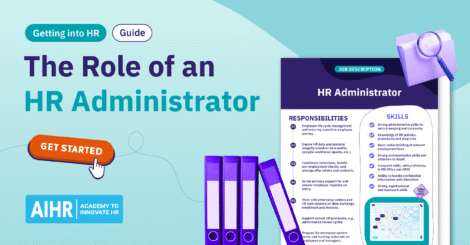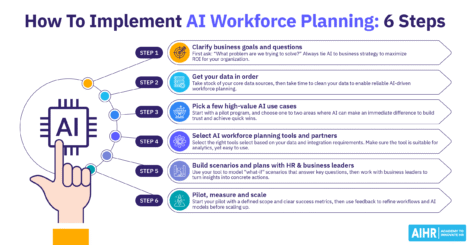Cascading goals are one of the most effective ways to connect individual performance to business priorities. In fact, employees are most motivated when their goals include both individual and team objectives (44%) and are clearly linked to company goals (40%). This can turn goal-setting from a yearly task into a powerful driver of engagement and results.
This article explores how cascading goals can help HR translate organizational strategy into focused team and individual objectives, and how HR leaders can align strategy, build accountability, and sustain motivation throughout the year. It also provides five practical examples of how to use cascading goals in different HR contexts.
Contents
What are cascading goals?
Cascading goals examples
Cascading goals vs. other goal-setting methodologies
8 ways to implement and use cascading goals
FAQ
Key takeaways
- Cascading goals link individual, team, and organizational targets to strategy, boosting motivation.
- HR can use cascades to drive impact by turning desired company outcomes into concrete department, team, and individual actions.
- Define goals in observable, measurable terms to improve engagement and accountability.
- The success of cascading goals hinges on co-creation, clear measures, linked incentives, and robust skills/capacity development and planning.
What are cascading goals?
Cascading goals is a goal-setting framework that translates company strategy into clear, measurable priorities at every level. You start with organization-wide objectives, then cascade them to departments, teams, and individuals, so that everyone’s work is linked to the plan. This creates alignment and clarity, as people know what they own and how it drives results.
For HR, cascading goals help connect strategy to everyday work and give leaders a clear way to align their teams. You can also use them to set HR priorities that align initiatives with business targets.
For example, if improving customer satisfaction is a company goal, HR can roll that down into service-quality training and performance metrics that reward customer-first behaviors. This alignment enables HR to demonstrate direct business impact and operate as a strategic driver, rather than just a support function.
Cascading goals examples
Here are five examples that showcase what cascading goals can look like in practice for the HR function:
Example 1: Improving organizational performance
- Organizational goal: Improve overall organizational performance by 10% within 12 months.
- HR department goal: Increase employee engagement scores and productivity by 15% within 12 months by redesigning the performance management framework to include quarterly check-ins and development plans for all employees.
- Team goal: Train all line managers on effective feedback and goal-setting conversations by Q2.
- Individual goal: Each manager holds at least one structured performance conversation per quarter with every team member and documents progress toward agreed-upon outcomes.
Do this: Audit your current performance management process to identify gaps in feedback frequency and goal alignment. Then, introduce a regular rhythm of short, forward-looking check-ins instead of one annual review.
Example 2: Boosting innovation and adaptability
- Organizational goal: Strengthen organizational innovation and adaptability by achieving a 20% increase in new ideas implemented across departments within 12 months.
- HR department goal: Launch an L&D strategy that achieves 80% participation in core innovation skills programs.
- Team goal: Design and promote modular learning pathways that link to business-critical capabilities.
- Individual goal: Complete two role-relevant courses per year and apply new skills to at least one active project.
Do this: Tie learning initiatives directly to organizational priorities. For example, if innovation is a strategic goal, focus L&D programs on creative problem-solving, data literacy, and collaboration skills.
Example 3: Strengthening DEIB
- Organizational goal: Increase workforce diversity and ensure equitable opportunities across all business units.
- HR department goal: Implement inclusive recruitment practices that raise diverse candidate representation in shortlists by 30%.
- Team goal: Partner with hiring managers to integrate structured interviews and bias-aware decision tools.
- Individual goal: Recruiters track and report diversity metrics monthly, and share learnings to refine sourcing strategies.
Do this: Focus on measurable outcomes, not just intentions, by tracking representation and analyzing drop-off points in the hiring funnel. Then, use that data to continuously refine your Diversity, Equity, Inclusion, and Belonging (DEIB) strategy.
Cascading goals are only effective when HR knows how to set the right ones and back them with data, capability, and strategic insight. To contribute meaningfully, your team needs the skills to translate HR priorities into measurable impact.
With AIHR for Business, your HR team will learn to:
✅ Define HR goals that support broader business strategies
✅ Use data to track progress across engagement, retention, and performance
✅ Design HR initiatives that are measurable, scalable, and aligned with KPIs.
🏆 Grow your HR team’s ability to drive business results with clear goals, data, and strategy.
Example 4: Improving talent retention
- Organizational goal: Reduce voluntary turnover from 18% to 12% within the financial year.
- HR department goal: Develop and execute a data-driven retention plan focused on key talent segments.
- Team goal: Introduce stay interviews for all high-performing employees and analyze feedback on a quarterly basis.
- Individual goal: Each HR Business Partner (HRBP) collaborates with a line leader to implement personalized retention actions for identified at-risk employees.
Do this: Segment your turnover data by role, department, and tenure to uncover where retention challenges really sit, and target interventions where they’ll have the most impact.
Example 5: Reducing absenteeism and enhancing employee wellbeing
- Organizational goal: Reduce absenteeism by 10% and improve overall employee wellbeing scores by 15% within 12 months.
- HR department goal: Launch a comprehensive wellbeing program, achieving at least 70% employee participation and an average satisfaction rating of 4 out of 5 in post-initiative surveys.
- Team goal: Organize one wellness activity per month and achieve at least 60% average participation across departments.
- Individual goal: Employees participate in at least one wellbeing initiative per quarter and complete the annual wellness survey.
Do this: Integrate wellbeing goals into performance discussions, so they become a shared responsibility. Leaders should model balance and encourage employees to make use of available resources.
Case study: Achieving goals
Performance measurement specialist Stacy Barr learned a better way to set goals at a personal development workshop and shared it with Harvard Business Review. The method uses sensory-specific language, i.e., words that describe what people would see, hear, or experience, and they achieve their goals.
Seeing that many business goals used vague, hard-to-measure terms (e.g., ‘efficient’, ‘effective’, or ‘sustainable’), she helped teams rewrite goals in concrete terms. For instance, instead of “transform customer performance”, the goal became “help customers achieve their business targets faster and at lower cost”.
Once teams had written their goals in observable terms, useful metrics followed naturally. When people could picture success clearly, engagement, motivation, and confidence in tracking progress rose.
As an HR professional, replace jargon with clear, observable language. When people can visualize success, goals become easier to measure and more achievable.
Cascading goals vs. other goal-setting methodologies
There are different goal-setting frameworks companies use, each serving a different purpose. Let’s take a look at the pros and cons of the most common goal-setting methodologies:
Cascading goals
Strong alignment and accountability across all levels; they ensure everyone contributes to strategic priorities.
Can become overly hierarchical if not co-created with employees; may reduce agility if goals are too rigid.
Organizations focused on clear strategic alignment and integrated performance management.
OKRs
Transparency, agility, and innovation; OKRs keep teams outcome-driven.
Can lead to burnout or confusion if objectives are unrealistic or poorly defined; need disciplined review cycles.
Fast-moving organizations that value innovation, adaptability and data-driven performance.
SMART goals
Easy to understand and apply; clear criteria for success.
Can feel tactical or limiting for long-term or qualitative goals.
Individual performance objectives and short-term project targets.
Management by objectives (MBO)
Collaboration and performance ownership; results linked directly to organizational priorities.
Can become administrative and time-consuming; may overemphasize output over learning.
Traditional performance management systems and results-oriented cultures.
Balanced scorecard
Encourages holistic performance tracking; connects financial and non-financial metrics.
Can be complex to implement and maintain; requires consistent data management.
Large or mature organizations seeking comprehensive performance alignment.
Big Hairy Audacious Goals (BHAGs)
Long-term focus; aspirational vision inspires teams.
Can lack immediate action steps; may feel unrealistic if not supported by smaller goals.
Leadership teams or organizations undergoing transformation or pursuing market leadership.
FAST goals
Accountability and adaptability; goals are dynamic and top-of-mind.
Cultural commitment required to open feedback and transparency.
Agile teams and organizations that prioritize speed, learning and collaboration.
HR tip
Use cascading goals at the start of the performance cycle to establish alignment, then complement them with ongoing OKRs or FAST goals to maintain agility and relevance throughout the year. This blended approach will help HR teams set goals that inspire commitment, support collaboration, and deliver measurable impact.
8 ways to implement and use cascading goals
When done well, cascading goals connect strategy, structure, and people. HR plays a dual role here: first, helping implement and run an organization-wide goal framework that translates strategy into measurable outcomes; and second, applying the same discipline within HR to strengthen its own alignment, focus, and accountability.
The following eight practices show how HR can both lead and live cascading goals, helping the business achieve its strategic objectives while increasing HR’s own effectiveness and credibility.
1. Start from outcomes, not activities
Begin by articulating the desired business outcomes for the next 12–18 months, then work backward and clarify what success looks like for each outcome in concrete, observable terms. Once those are clear, HR can help each function translate them into measurable goals.
Rolls-Royce, for instance, simplified its performance management process and aligned goals with a granular strategy, defining where, how, and by how much to improve, turning broad ambitions into specific objectives that leaders and teams could directly act on.
Do this: Facilitate an outcomes workshop with executives to define three to five measurable business outcomes for the year, then create a simple alignment map that shows how each function contributes.
2. Co-create goals to build buy-in and trust
Cascading goals stick when people have a voice in shaping them. HR can guide other departments through collaborative goal-setting sessions, ensuring everyone understands how their work connects to larger outcomes. For example, Spotify shapes values and beliefs via workshops for all staff, making those values and beliefs more meaningful and actionable.
Within HR, co-create goals across functions (like L&D and Talent Acquisition) to strengthen ownership and alignment.
Do this: Start with your own department. Run a goal-shaping workshop for each major HR function and translate them into outcomes that determine what the business needs from HR this year. Capture the ‘why’ and ‘how’ before finalizing metrics and targets.
3. Cascade in clear layers, then check for seams
After defining business outcomes and functional goals, work to cascade them to teams and individuals and check for cross-functional dependencies and overlapping goals. Be sure to align the entire company on a clear set of goals — developing goals in silos often leads to failure, as it ignores interdependencies.
Internally, HR should do the same across its own subfunctions to prevent duplication and make dependencies explicit.
Do this: After cascading, facilitate a dependencies review where each team lists its key stakeholders, clarifies how their goals intersect, and establishes coordination mechanisms to ensure alignment.
4. Model from the top and simplify the process
Cascading goals fail when they’re overcomplicated or inconsistently applied. HR’s job is to make the process simple, transparent, and supported by visible leadership. When senior leaders, including HR leaders, share their own goals, review progress openly, and use the same framework as everyone else, it sends a clear message that alignment matters. This builds trust and turns the cascading goals system into a shared language, not just an HR formality.
Do this: Design a one-page goal-setting template, limit goals per person to no more than four, and ensure concise guidance and training. You can also launch a leader kick-off session where HR leaders share their own cascading goals and how they link to both HR and organizational strategy.

5. Define the system’s purpose and scope
Before launching cascading goals, HR needs to help clarify what the system is designed to achieve. Is it mainly about driving short-term business performance, supporting innovation, or developing long-term capability?
Setting this focus determines what types of goals are prioritized, how success is measured, and how teams balance delivery versus growth. HR should make this focus explicit for the organization and for its own function so that everyone works toward the same intent. For example, Spotify’s people strategy emphasizes growth and learning as one of the principles, aligning people’s objectives with that ethos rather than only with output metrics.
Do this: In your HR plan, include a purpose statement for the cascading goals system and communicate it clearly across the organization. For instance: “This year, our goal framework will support both performance delivery and capability growth, with 70% weighting on delivery and 30% on learning.”
6. Make goals measurable and fair
Link goals at every level to evidence, leading indicators, and clear metrics, and balance outcome and learning goals. Misalignment often arises when different people and teams interpret the same goals differently, making clarity around measurement essential.
Do this: For each goal, establish success criteria, leading indicators, and review frequency. Then, train managers to review these with their teams and calibrate for fairness.
7. Link incentives and reviews to what matters
Cascading goals are powerful when tied to recognition, reviews, and incentives that are transparent. For example, WalkMe linked quarterly bonuses to business, team, and individual goals. Embedding these goals into hiring, onboarding, and reward systems can also help align culture and strategy.
Do this: Revise your performance-reward policy to partially tie variable pay to the achievement of cascading goals (enterprise, function, and individual), communicate the formula clearly, and ensure that quarterly reviews occur.
8. Connect cascading goals to skills and capacity
Goals must indicate whether your workforce and company have the capability to deliver. For example, the Standard Chartered bank mapped critical skills needed to achieve its strategic objectives, then cascaded those priorities into individual learning pathways. Employees accessed digital learning, simulations, and a talent marketplace that connected development to real business needs. The result: 82% platform adoption, a 16% rise in personal development activity, and clear improvements in engagement and redeployment outcomes, all driven by learning goals that directly supported organizational strategy.
Do this: For each goal cascade, add a “skills enabler” field (e.g., “build team data analysis capability to achieve this goal”). Include it in the goal dialogue — for instance, each team member lists one to two upskilling actions and how they’ll apply the new skill by weeks 6 and 12.
Over to you
Cascading goals bridge the gap between ambition and execution. When designed thoughtfully and co-created with employees, they align strategy, clarify expectations, and support accountability across every level of the organization, including the HR department.
Ultimately, cascading goals work because they make strategy personal. When people understand how their contributions move the business forward, they feel more motivated, connected, and confident in their role. The result is two-fold: alignment and shared ownership of success.
FAQ
A cascading strategy begins with a broad company goal (e.g., increasing customer satisfaction by 15%) and translates it into aligned departmental and team objectives. For instance, HR might design new service training programs, operations might streamline response times, and individual staff might have targets linked to customer feedback scores. Each layer reinforces the one above it, ensuring everyone contributes to the same outcome.
The purpose of cascading is to align individual and team actions with the organization’s strategic objectives. It ensures every effort (no matter how small) drives progress toward shared goals. Cascading creates clarity, accountability, and connection, turning strategy from a leadership statement into a lived experience across the business.
Start with the organization’s top-level outcomes and work your way down. Define what success looks like for each goal in measurable, observable terms, then identify how each function, team, and individual contributes to achieving it. Involve staff in shaping these goals to build ownership, specify key metrics and skills enablers, and schedule regular reviews to track progress and adapt where needed.


















